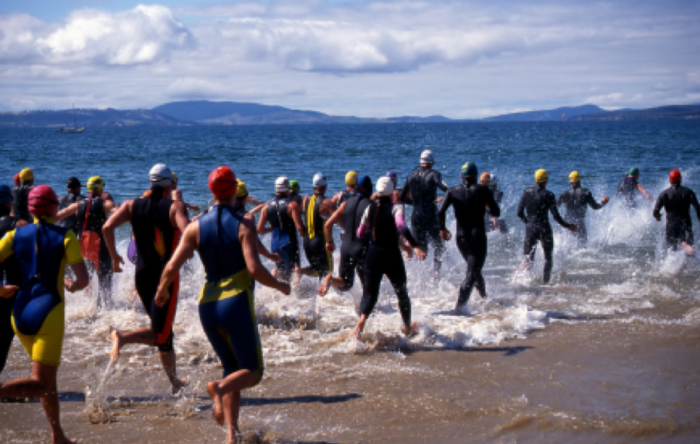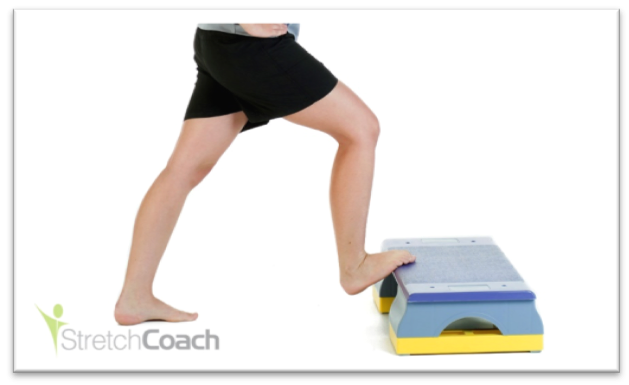
Triathletes must train diligently for the high demanding events of a triathlon, comprising swimming, cycling, and running. The characteristic transition from one sport to the next must be completed quickly and is very exhaustive. The history of Triathlon dates back to the IronMan in Hawaii. It all started to pick the best athlete in all three sports categories.
Muscles that are most used in Triathlon
Triathlon is a very competitive sporting event. Almost all of the triathlete’s body is rigorously used, with very little of the body to spare. However, the legs are the most crucial part and play the most significant role in every aspect of the race. The legs bear most of the stress and strain in cycling, and especially running, but are also used in swimming. The exhaustive workload from these sports takes a major toll on the quadriceps, hamstrings, calves, gluteals, and lower back muscles.
The second group of muscles that require proper training are that of the shoulder and arms. Especially in swimming, the wide array of muscle groups like biceps, triceps, and rotator cuff muscles play an integral role. Even deltoids, abs, and all core muscles get to play a significant role in the competition.
How to prevent Triathlon injuries?
It is crucial to maintain extremely high fitness levels to avoid serious sports injuries when training and competing in triathlons. Aerobic and cardiovascular training, coupled with strength exercises, is key. The addition of sprint training in all three sports can help to build better endurance for swimming, cycling, and running.
Some of the effective ways to minimize the risk of injuries in the training-phase or the competition itself are as follows:
- Warm-up: A thorough and proper warm-up before training or competition can be very helpful for your body.
- Cool-down: Allowing an adequate cool-down period will enable your body to avoid excessive stress.
- Strength and conditioning: Strength training helps to reduce injuries by strengthening muscles, tendons, and the supporting joints.
- Stretching: Frequent stretch exercises are essential as stiff joints and muscles often lead to injuries. Improved flexibility helps to lower the chances of injury.
- Technique: Learning the correct technique or biomechanical form for each sport will not only make you a better triathlete, but it will also reduce the likelihood of overuse injury from repetitive motions.
- Gear: Using proper gear for each of the three sports is as important as the training for each of them. Any exposed or weak portion of your body should be adequately protected and supported before training or competition.
- Hydration: Drinking plenty of water is crucial to triathletes’ health. Dehydration can set you back and lead to fatigue and disorientation.
- Rest: Adequate rest and proper sleep every night are key to ensuring the maximum functionality of the body.
The three Best Stretches for Triathletes
A proper stretching program is the most vital yet often overlooked aspect of triathlon training. Triathlon stretches can help with athletic performance, minimize the risks of sports injury, and play a vital role in rehabilitating sprain or strain injuries. Below are 3 of the most effective stretching exercises focusing on triathletes; obviously, there are a lot more, but these are a great place to start.
Instructions: Slowly move into the stretch position until you feel a tension of about 7 out of 10. If you feel pain or discomfort you’ve pushed the stretch too far; back out of the stretch immediately. Hold the stretch position for 20 to 30 seconds while relaxing and breathing deeply. Come out of the stretch carefully and perform the stretch on the opposite side. Repeat 2 or 3 times.

Reaching-up Shoulder and Rotators Stretch: Place one hand behind your back and then reach up between your shoulder blades.

Kneeling Upper Hip & Quad Stretch: Kneel on one foot and the other knee. If needed, hold on to something to keep your balance and then push your hips forward

Standing Toe-up Calf and Achilles Stretch: Stand upright and place the ball of your foot onto a step or raised object. Bend your knee, let your heel drop towards the ground, and lean forward.
With stretch training, just like aerobic and strength training, the most important thing to remember is consistency. You’ll only be able to reap the benefits if you follow proper technique and maintain consistency over time. For more great triathlon stretches, visit StretchCoach.com

Brad Walker is an internationally recognized stretching and sports injury consultant with 30 years of practical experience in the health and fitness industry. A Health Science graduate of the University of New England, he has postgraduate accreditations in athletics, swimming, and triathlon coaching. He has worked with elite level and world champion athletes and has lectured for Sports Medicine Australia on injury prevention.
Brad has written several health and exercise books including a number of international best-sellers, including: The Stretching Handbook; The Anatomy of Stretching; and The Anatomy of Sports Injuries. His stretching and sports injury articles have been published in numerous health and fitness magazines and extensively online at sites such as About.com, Athletes.com and BodyBuilding.com
Brad Walker